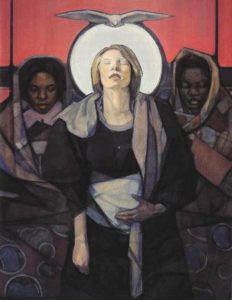Kathleen Rushton rsm explains how our usual image of the birth of Jesus is different from what we find in Luke 2:1–20.

We’ll see many Christmas cribs in homes and churches this season — Joseph, Mary and the baby in a stable with animals and with shepherds and kings visiting.
These crib sets derive more from the Protevangelium of James, a “novel” written about 200CE by an unknown Christian, than from the Gospels. And even our understanding of the gospel accounts need to be informed by a knowledge of the first-century Middle Eastern community and culture.
Community Involvement
In Luke’s Gospel there is no mention of the Bethlehem community into which Mary and Joseph arrived. Yet in that culture a woman about to give birth would have been given special care and attention by other women.
The biblical scholar Kenneth Bailey, who lived and researched in the Middle East, suggests that Luke’s Gospel gives us insight into the hospitality and care given to Mary. He points to the shepherds who “returned, glorifying and praising God for all they had heard and seen” (Lk 2:20) — the “all” would have included the quality of hospitality that they received. If the family had not been sheltered and cared for adequately, the shepherds would have been outraged and said: “Come home with us! Our women will take care of you!” The honour of the village rested on hospitality…
Continue reading the article below:
Tui Motu Issue 244, December 2019
Kathleen Rushton RSM lives in Ōtautahi Christchurch where, in the sight of the Southern Alps and the hills, she continues to delight in learning and writing about Scripture.
*Painting: Mary with the Midwives by Janet McKenzie © 2009 USA www.janetmckenzie.com Collection of Catholic Theological Union, Chicago, IL USA. Used with permission.
